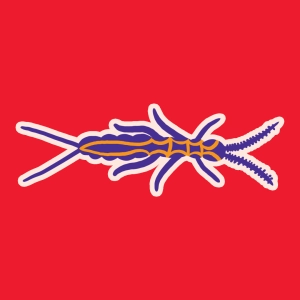 Insect respiration
Insect respiration
Like all living things, insects respire by absorbing oxygen and excreting carbon dioxide. They have an air-based respiration, as gas exchanges are carried out with gases in the air.
Unlike most of the air-breathing vertebrates , the insects (invertebrate animals) do not breather using lungs. The respiratory organs of insects are called tracheal tubes.
These are a network of tubes opening to the exterior via respiratory orifices (stigmas) and extending to all of the organs of the insect’s body by branching into tracheoles having very fine, permeable walls. It is by contact across these walls that gas exchanges are carried out.
